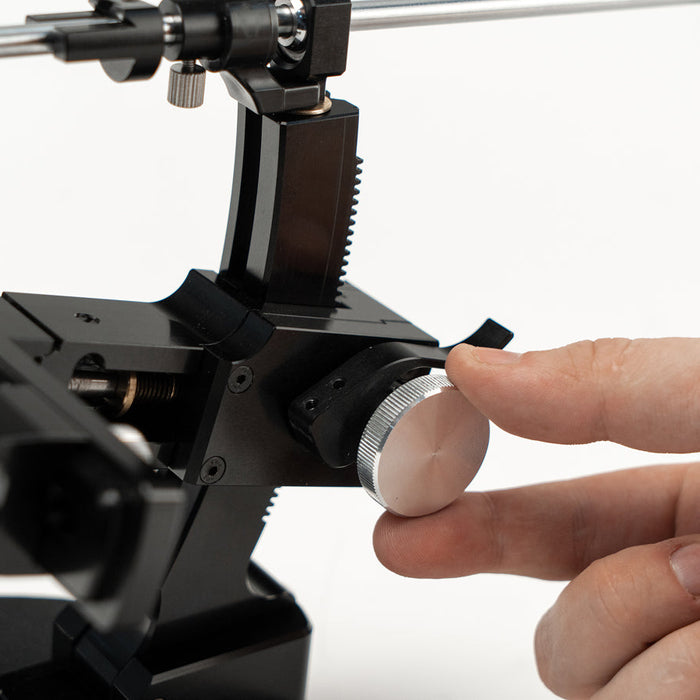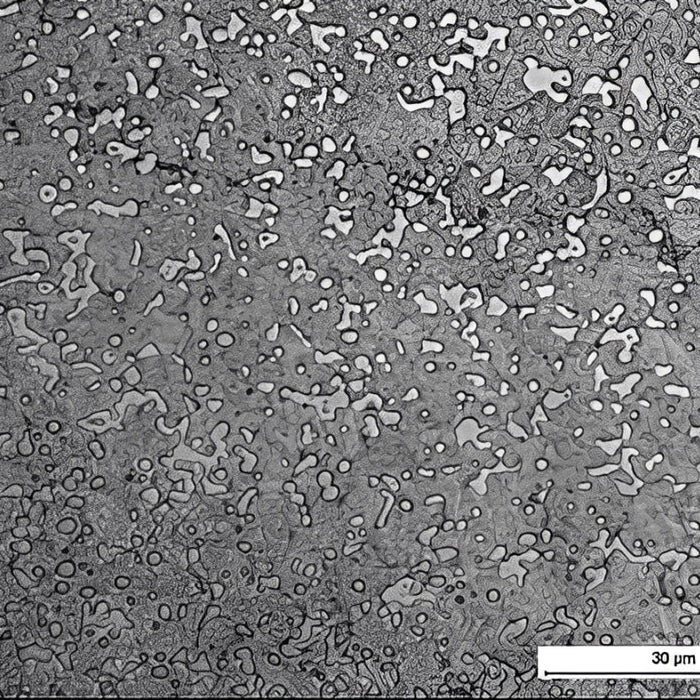1. Knife sharpening techniques and hacks
All of the existing knife sharpening methods and techniques can be grouped into four basic ways of knife sharpening, without paying attention to exactly how things work in detail.
1.1. Manual sharpening
The manual knife sharpening using a natural whetstone or an artificial abrasive stone is a classic sharpening method known since ancient times. Despite its fame, it is not an easy process, but it is the most popular and accessible way. The experience of manual knife sharpening makes a lot of difference because if the owner of the knife has sufficient skill, he will be able to hone or finish the cutting edge of the knife blade in almost any condition and by any other modern hacks.

Most of the time, manual sharpening does not have a complete cycle and mainly consists of honing and finishing. For this reason, a coarse abrasive stone is not necessary. In such a case, it is better using a whetstone with a more uniform abrasive grain to hone the cutting edge blade in a two step way instead of resharpening it.
With some experience, you can get a knife with a very sharp cutting edge blade by using this method. Once you have sharpened one side, turn the knife blade over to the other side and repeat the entire process, including the removal of the burr.
A significant issue will always be getting the factory angle or the angle that was created earlier using manual sharpening on the stone.
This problem frequently comes up because the manual sharpening method is still very popular due to its accessibility and relatively low expenses.
In order to get the best out of it, you need to maintain the already existing angle. This is quite simple - place the first side blade secondary bevel on the surface of an abrasive stone or natural sharpening stone, so that the secondary bevel lies completely flat. To check that everything is right, you can rock the blade edge along the secondary bevel, and you will feel the shoulders of this side touch the surface of the abrasive stone in turn. Repeat the same for the second side. You will feel it and you will get used to this knife sharpening technique step by step.
After this, you can begin to make slow and not very wide forward and backward translational movements. To sharpen the belly (the curved part closer to the tip) and the tip of the blade edge, you will need to follow the same instructions, but you will need to raise your elbow slightly, as the angle with respect to the abrasive will change as the sharpening progresses to the tip, and the very spot of contact with the abrasive stone will get much smaller. Over time, your hands will get used to it and your experience will increase and it will stop being an issue. There is no trick to this.
For manual knife sharpening you should use a bar that is the same length as the blade of your knife.
Of all sharpening ways and methods which do not use special devices, but require the use of manual labor, we can mention various types of a whetstone, pocket sharpening bars, and pocket sharpeners with different abrasives attached to them.
In other words, any technical device that uses manual labor and has no significant auxiliary units for controlling the sharpening angle can be considered a manual sharpening. In this case, the result of the sharpness of the knife blade depends not on the abrasive stone, but on the ability to handle it.
1.2. Mechanical sharpening
Mechanical sharpening methods include all kinds of pocket or portable folding sharpeners, and various kinds of desktop mechanical devices with measuring scales or with the possibility of controlling the sharpening angle. One of the most advanced types in this market range are sharpening systems with a turning mechanism, sharpening angle control unit, and a guide rod for clamping abrasives of different sizes.
As in the previous case, this sharpening method involves a lot of manual labor on the part of the user. The difference is that the entire process is considerably more technological and precise.
Mechanical devices may share a similar design, but they can have a different purpose.


All mechanical devices can be divided into certain size groups:
- compact size
- medium size
- full size
Compact systems are used when there is a need for small size, light weight, and the need to make sharp a small to medium-sized knife with a relatively small blade. The main advantage is the size of the clamps or the size of the clamping frame. Sharpening a small knife with a thin blade will be much easier to do with this type of sharpener. These sharpeners will find their place in the home kitchen. The price of such devices can range significantly and be a little unclear.
The most advanced of the compact sharpening systems is the TSPROF Blitz Pro.

The essence of the difference between compact devices comes down to their purpose, frequency of use, their manufacturability, precision, and performance. For minor honing and occasional and careful use, a cheaper compact sharpener will be enough, but for the home kitchen and even for larger kitchen knives, the TSPROF Blitz Pro is the best choice.
Medium size sharpening systems, as compared to compact and full size sharpeners, usually differ in the size of the stone holder of a certain standard, as well as the range of sharpening angles. Some may also have a turning mechanism. These sharpeners can be used in workshops for sharpening small knife blade series with some limitations.
It is a bit more difficult to tell the difference between medium size sharpeners and full size benchtop sharpening systems and the price is not the main point. First, you have to choose the sharpener, and then you have to deal with the price.
If we consider the question of the differences between the sharpeners of this class: the large, full size sharpeners are obviously the most effective because they can cover the widest possible knife range.
All existing mechanical full size benchtop sharpening systems from different manufacturers are complex devices with a number of similarities and differences. The very number of technical specifications, and even more so their possible combinations, requires a certain level of understanding of their purpose.
Those using such sharpeners should understand upfront that with experience and the use of the right abrasive stone, the quality of such systems is much higher than all others. It also means that a certain quality will always be worth a certain amount of time for manual work, so the price for a properly sharpened knife blade will follow.
1.3. Semi-automatic sharpening
First of all, semi-automatic sharpeners include all devices and machines with manual or fixed adjustment of the sharpening angle, which are driven by an electric engine. The operator must be present in order to guide the blade of the knife over the rotating abrasive.
The difference between mechanical sharpening and semi-automatic sharpening is that the semi-automatic process is much faster and more efficient.
In this group of equipment, you can find both simple and complex devices. In some cases, the user can adjust the necessary parameters, and in some cases, they cannot.


The group of semi-automatic devices includes the following tools:
- Electric kitchen sharpeners
- Belt sander and grinders without cooling
- Electric water-cooled knife sharpeners
- Electric water-cooled sharpening machines
The main feature of all benchtop kitchen electric sharpeners is that anyone without sharpening skills can sharpen a knife blade at the level at which it comes from the factory or even sharper. The devices with slots at certain angles were created to solve this very problem.
The use of electric sharpeners does not mean getting deep into knife blade sharpening. Such devices, no matter the manufacturer, are very easy to understand and there is no need to take any courses: just buy it, plug it in, and use it. The best place for an electric sharpener is the home kitchen.
Of all power driven devices, belt sanding machines and grinders stand out for their maximum efficiency. The wide range of different grinding belt materials extends the range of use, from aggressive metal removal, profiling, and all the way to grinding and polishing.
In that sense, sharpening using an endless belt grinder can be considered an advanced, modern and efficient machining method. The consistency of standard sharpening angles can be achieved with attachments and accessories.
Electric water-cooled knife sharpeners are also popular in medium-sized workshops and production facilities where there is a significant volume of machining of cutting tools.
The main features and advantages of this class of sharpening machines are high efficiency, versatile use, and high precision due to their variability and versatility.
Consistency and precision of the sharpening angle adjustment, RPM support and adjustment, as well as the presence of water cooling, are one of the main features of this kind of machine.
Electric water-cooled sharpening machines can be found at a number of manufacturers, but the significant difference compared to even a professional wet sharpening machine will be the equipment of the unit which provides higher ease of use, and thus the speed of getting the result.

This unit combines the elements of a wet sharpener with sharpening slots and a belt sander. Considering that such units are equipped with water cooling as standard, they are far superior to any other equipment that does not have one.
This reliable and efficient equipment is designed for catering, gastronomy, meat packing plants, grinding shops, etc. Besides, equipment of this type allows you to sharpen various cutting tools such as meat cutting knives, carving knives, chef knives, table knives, and many others. It does not require special training of operating personnel.
Along with low power consumption and relatively low noise level, these devices have a high retail price with an understandable payback with relatively low maintenance costs.
1.4. Automatic or batch sharpening
Automatic knife blade sharpening and other cutting tools is most often required on an industrial scale and is performed on CNC robotically controlled machine tools.
CNC machines are capable of automatic knife sharpening, with adjusting to any size and shape as needed. Such machines can almost be referred to as the highest category of technological devices, which have high-performance rate.
Depending on production requirements, it is possible to measure blade specifications individually before starting the sharpening program - each individual knife blade can be scanned at the measuring station, allowing you to make sharp knives of different shapes and sizes.

According to various sources, the performance of such equipment is several hundred sharp knives per work shift with minimal staff involvement.
Such machines are used in combination with an integrated aspirator and water cooling to prevent the fine dust particles generated during sharpening and polishing from entering the environment. This protects the operator's respiratory organs.
This keeps the engine room almost clean and increases the operational safety of the mechanical parts. The filtered grinding and polishing abrasive material is collected in special trays. From there it can be easily disposed of in an eco-friendly way.
CNC automatic machine tools also have a number of disadvantages due to their large size and high power consumption. High cost of purchase and long payback period make sense only in the industrial scale. In addition, to operate the machine you need to have trained staff to adjust and debug technical tasks.












